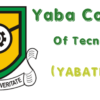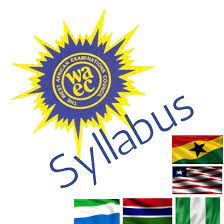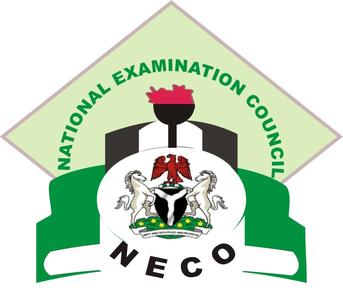The WAEC Syllabus For Chemistry 2022/2023 will guide you to prepare adequately for the forthcoming West African Senior School Certificate Examination (WASSCE). Kindly find below both the typed and the PDF version of the syllabus.
This syllabus is drawn purposely for examination, hence the topics are not necessarily arranged in the order in which they should be taught.
The following assumptions were made in drawing of the syllabus:
- That candidates must have covered the Integrated Science/Basic Science or General Science and Mathematics syllabuses at the Junior Secondary School (JSS)/Junior High School (J.H.S) level;
- That candidates would carry out as many of the suggested activities and project work as possible, and consequently develop the intended competencies and skills as spelt out in the relevant Chemistry teaching syllabuses;
- That schools which offer the subject have well-equipped laboratories.
Note: Candidates are required to have the knowledge of the significant figures, S.I. units and the conventional/IUPAC system of nomenclature.
2. AIMS
The aims and objectives of the syllabus are to assess candidates’
- understanding of basic chemistry concepts;
- level of acquisition of laboratory skills including awareness of hazards and safety measures;
- level of awareness of the inter-relationship between chemistry and other discipline;
- level of awareness of the linkage between chemistry and industry/environment/everyday life in terms of benefits and hazards;
- skills of critical and logical thinking.
3. EXAMINATION SCHEME
There shall be three papers – Papers 1, 2 and 3 all of which must be taken. Paper 1 and 2 shall be a composite paper to be taken at one sitting.
PAPER 1: Will consist of fifty multiple choice objective questions drawn from Section A of
the syllabus (ie the portion of the syllabus which is common to all candidates) . Candidates will be required to answer all the questions within 1 hour for 50 marks.
PAPER 2: Will be a 2-hour essay paper covering the entire syllabus and carrying 100 marks. The paper will be in two sections; Sections A and B.
Section A: Will consist of ten short structured questions drawn from the common portion of the syllabus. (i.e. Section A of the syllabus). Candidates will be required to answer all the questions for 25 marks.
Section B: Will consist of two questions from the common portion of the syllabus (i.e. Section A of the syllabus) and two other questions from the section of the syllabus which is peculiar to the country of the candidate (i.e. either Section B or C of the syllabus). Candidates will be required to answer any three of the questions. Each question shall carry 25 marks.
PAPER 3: This shall be a 2-hour practical test for school candidates or 1 hour 30 minutes alternative to practical work test for private candidates. Each version of the paper shall contain three compulsory questions and carry 50 marks.
The questions shall be on the following aspects of the syllabus:
– One question on quantitative analysis;
– One question on qualitative analysis;
– The third question shall test candidates’ familiarity with the practical activities suggested in their teaching syllabuses.
Details of the input into the continuous assessment shall be given by the Council.
WAEC Syllabus For Chemistry 2022/2023 PDF
DETAILED SYLLABUS (WAEC Syllabus For Chemistry 2022/2023)
SECTION A (For all candidates)
| CONTENT | NOTES |
| 1.0 INTRODUCTION TO CHEMISTRY | |
| (a) (i) Measurement of physical quantities. (ii) Scientific measurements and their importance in chemistry. | (1) Measurement of mass, length, time, temperature and volume. (2) Appropriate SI units and significant figures. (3) Precision and accuracy in measurement. |
| (b) Scientific Methods | Outline the scientific method to include: Observation, hypothesis, experimentation, formulation of laws and theories. |
| 2.0 STRUCTURE OF THE ATOM (WAEC Syllabus For Chemistry 2022/2023) | |
| (a) Gross features of the atom. | (1) Short account of Dalton’s atomic theory and limitations, J.J. Thompson’s experiment and Bohr’s model of the atom. (2) Outline description of the Rutherford’s alpha scattering experiment to establish the structure of the atom. |
| (b) (i) Atomic number/proton number, number of neutrons, isotopes, atomic mass, mass number. (ii) Relative atomic mass (Ar) and relative molecular mass (Mr) based on Carbon-12 scale. (iii) Characteristics and nature of matter. | Meaning and representation in symbols of atoms and sub-atomic particles. (1) Atomic mass as the weighted average mass of isotopes. Calculation of relative mass of chlorine should be used as an example. (2) Carbon-12 scale as a unit of measurement. Definition of atomic mass unit. Atoms, molecules and ions. Definition of particles and treatment of particles as building blocks of matter. |
| (c) Particulate nature of mater: physical and chemical changes. | Explain physical and chemical changes with examples. Physical change- melting of solids, magnetization of iron, dissolution of salt etc. Chemical change- burning of wood, rusting of iron, decay of leaves etc. |
| (d) (i) Electron Configuration (ii) Orbitals (iii) Rules and principles for filling in electrons. | Detailed electron configurations (s,p,d) for atoms of the first thirty elements. Origin of s,p and d orbitals as sub-energy levels; shapes of s and p orbitals only. (1) Aufbau Principle, Hund’s Rule of Maximum Multiplicity and Pauli Exclusion Principle. (2) Abbreviated and detailed electron configuration in terms of s, p, and d. |
| 3.0 STANDARD SEPARATION TECHNIQUES FOR MIXTURES (WAEC Syllabus For Chemistry 2022/2023) | |
| (a) Classification of mixtures. (b) Separation techniques (c) Criteria for purity. | Solid-solid, solid-liquid, liquid-liquid, gas-gas with examples. Crystallization, distillation, precipitation, magnetization, chromatography, sublimation etc. Boiling point for liquids and melting point for solids. |
| 4.0 PERIODIC CHEMISTRY (WAEC Syllabus For Chemistry 2022/2023) | |
| (a) Periodicity of the elements. | Electron configurations leading to group and periodic classifications. |
| (b) Different categories of elements in the periodic table. | Metals, semi-metals, non-metals in the periodic table and halogens. Alkali metals, alkaline earth metals and transition metals as metals. |
| (c) Periodic law: (i) Trends on periodic table; (ii) Periodic gradation of the elements in the third period (Na – Ar). | Explanation of the periodic law. Periodic properties; atomic size, ionic size, ionization energy, electron affinity and electronegativity. Simple discrepancies should be accounted for in respect to beryllium, boron, oxygen and nitrogen. (1) Progression from: (i) metallic to non-metallic character of element; (ii) ionic to covalent bonding in compounds. (2) Differences and similarities in the properties between the second and the third period elements should be stated. |
| (d) Reactions between acids and metals, their oxides and trioxocarbonates (IV). | (1) Period three metals (Na, Mg, Al). (2) Period four metals (K, Ca). (3) Chemical equations. (4) pH of solutions of the metallic oxides and trioxocarbonates. |
| (e) Periodic gradation of elements in group seven, the halogens: F, Cl, Br and I. | Recognition of group variations noting any anomalies. Treatment should include the following: (a) physical states, melting and boiling points; (b) variable oxidation states; (c) redox properties of the elements; (d) displacement reaction of one halogen by another; (e) reaction of the elements with water and alkali (balanced equations required). |
| (f) Elements of the first transition series. 21Sc – 30Zn | (1) Their electron configurations, physical properties and chemical reactivity of the elements and their compounds. (2) Physical properties should include: physical states, metallic properties and magnetic properties. (3) Reactivity of the metals with air, water, acids and comparison with sblock elements (Li, Na, Be, Mg). (4) Other properties of transition metals should include: (a) variable oxidation states; (b) formation of coloured compounds; (c) complex formation; (d) catalytic abilities; (e) paramagnetism; (f) hardness. |
| 5.0 CHEMICAL BONDS (WAEC Syllabus For Chemistry 2022/2023) | |
| (a) Interatomic bonding | Meaning of chemical bonding. Lewis dot structure for simple ionic and covalent compounds. |
| (b) (i) Formation of ionic bonds and compounds. | Formation of stable compounds from ions. Factors influencing formation: ionzation energy; electron affinity and electronegativity difference. |
| (ii) Properties of ionic compounds. | Solubility in polar and non-polar solvents, electrical conductivity, hardness and melting point. |
| (c) Naming of ionic compounds. | IUPAC system for simple ionic compounds. |
| (d) Formation of covalent bonds and compounds. | Factors influencing covalent bond formation. Electron affinity, ionization energy, atomic size and electronegativity. |
| (e) (i) Properties of covalent compounds. | Solubility in polar and non-polar solvents, melting point, boiling point and electrical conductivity. |
| (ii) Coordinate (dative) covalent bonding. | Formation and difference between pure covalent and coordinate (dative) covalent bonds. |
| (f) Shapes of molecular compounds. | Linear, planar, tetrahedral and shapes for some compounds e.g. BeCl2, BF3, CH4, NH3, CO2. |
| (g) (i) Metallic Bonding (ii) Factors influencing its formation. (iii) Properties of metals. | Factors should include: atomic radius, ionization energy and number of valence electrons. Types of specific packing not required. Typical properties including heat and electrical conductivity, malleability, lustre, ductility, sonority and hardness. |
| (h) (i) Inter molecular bonding (ii) Intermolecular forces in covalent compounds. (iii) Hydrogen bonding (iii) van der Waals forces (iv) Comparison of all bond types. | Relative physical properties of polar and non-polar compounds. Description of formation and nature should be treated. Dipole-dipole, induced dipole-dipole, induced dipole-induced dipole forces should be treated under van der Waal’s forces. Variation of the melting points and boiling points of noble gases, halogens and alkanes in the homologous series explained in terms of van der Waal’s forces; and variation in the boiling points of H2O, and H2S explained using Hydrogen bonding. |
| 6.0 STOICHIOMETRY AND CHEMICAL REACTIONS (WAEC Syllabus For Chemistry 2022/2023) | |
| (a) (i) Symbols, formulae and equations. (ii) chemical symbols (iii) Empirical and molecular formulae. (iv) Chemical equations and IUPAC names of chemical compounds. (v) Laws of chemical combination. | Symbols of the first thirty elements and other common elements that are not among the first thirty elements. Calculations involving formulae and equations will be required. Mass and volume relationships in chemical reactions and the stoichiometry of such reactions such as: calculation of percentage composition of element. (1) Combustion reactions (including combustion of simple hydrocarbons) (2) Synthesis (3) Displacement or replacement (4) Decomposition (5) Ionic reactions (1) Laws of conservation of mass. (2) Law of constant composition. (3) Law of multiple proportions. Explanation of the laws to balance given equations. (4) Experimental illustration of the law of conservation of mass. |
| (b) Amount of substance. | (1) Mass and volume measurements. (2) The mole as a unit of measurement; Avogadro’s constant, L= 6.02 x 1023 entities mol-1. (3) Molar quantities and their uses. (4) Moles of electrons, atoms, molecules, formula units etc. |
| (c) Mole ratios | Use of mole ratios in determining stoichiometry of chemical reactions. Simple calculations to determine the number of entities, amount of substance, mass, concentration, volume and percentage yield of product. |
| (d) (i) Solutions (ii) Concentration terms (iii) Standard solutions. | (1) Concept of a solution as made up of solvent and solute. (2) Distinguishing between dilute solution and concentrated solution. (3) Basic, acidic and neutral solutions. Mass (g) or moles (mol) per unit volume. Emphasis on current IUPAC chemical terminology, symbols and conventions. Concentration be expressed as mass concentration, g dm-3, molar concentration, mol dm-3. (1) Preparation of some primary standards e.g anhydrous Na2CO3, (COOH)2, 2H2O/H2C2O4.2H2O. (2) Meanning of the terms primary standard, secondary standard and standard solution. |
| (e) Preparation of solutions from liquid solutes by the method of dilution. | Dilution factor |
| 7.0 STATES OF MATTER (WAEC Syllabus For Chemistry 2022/2023) | |
| (a) (i) Kinetic theory of matter. (ii) Changes of state of matter. (iii) Diffusion | (1) Postulates of the kinetic theory of matter. (2) Use of the kinetic theory to explain the following processes: melting of solids, boiling of liquids, evaporation of liquids, dissolution of solutes, Brownian motion and diffusion. (1) Changes of state of matter should be explained in terms of movement of particles. It should be emphasized that randomness decreases (and orderliness increases) from gaseous state to liquid state and to solid state and vice versa. (2) Illustrations of changes of state using the different forms of water, iodine, sulphur, naphthalene etc. (3) Brownian motion to be illustrated using any of the following experiments: (a) pollen grains/powdered sulphur in water (viewed under a microscope); (b) smoke in a glass container illuminated by a strong light from the side; (c) a dusty room being swept and viewed from outside under sunlight. (1) Experimental demonstration of diffusion of two gases. (2) Relationship between speed at which different gas particles move and the masses of particles. (3) Experimental demonstration of diffusion of solute particles in liquids. |
| (b) Gases: (i) Characteristics and nature of gases; (ii) The gas laws; (iii) Laboratory preparation and properties of some gases. | Arrangement of particles, density, shape and compressibility. The Gas laws: Charles’; Boyle’s; Dalton’s law of partial pressure; Graham’s law of diffusion, Avogadro’s law. The ideal gas equation of state. Qualitative explanation of each of the gas laws using the kinetic model. The use of Kinetic molecular theory to explain changes in gas volumes, pressure, temperature. Mathematical relations of the gas law PV= nRT Ideal and Real gases Factors responsible for the deviation of real gases from ideal situation. (1) Preparation of the following gases: H2, NH3 and CO2. Principles of purification and collection of gases. (2) Physical and chemical properties of the gases. |
| (c) (i) Liquids (ii) Vapour and gases. | Characteristics and nature of liquids based on the arrangement of particles, shape, volume, compressibility, density and viscosity. (1) Concept of vapour, vapour pressure, saturated vapour pressure, boiling and evaporation. (2) Distinction between vapour and gas. (3) Effect of vapour pressure on boiling points of liquids. (4) Boiling at reduced pressure. |
| (d) Solids: (i) Characteristics and nature; (ii) Types and structures; (iii) Properties of solids. | (1) Ionic, metallic, covalent network and molecular solids. Examples in each case. (2) Arrangements of particles ions, molecules and atoms in the solid state. Relate the properties of solids to the type of interatomic and intermolecular bonding in the solids. Identification of the types of chemical bonds in graphite and differences in the physical properties. |
| (e) Structures, properties and uses of diamond and graphite. | The uses of diamond and graphite related to the structure. The use of iodine in everyday life. |
| (f) Determination of melting points of covalent solids. | Melting points as indicator of purity of solids e.g. Phenyl methanedioic acid (benzoic acid), ethanedioic acid (oxalic) and ethanamide. |
| 8.0 ENERGY AND ENERGY CHANGES (WAEC Syllabus For Chemistry 2022/2023) | |
| (a) Energy and enthalpy | Explanation of the terms energy and enthalpy. Energy changes associated with chemical processes. |
| (b) Description, definition and illustrations of energy changes and their effects. | (1) Exothermic and endothermic processes. (2) Total energy of a system as the sum of various forms of energy e.g. kinetic, potential, electrical, heat, sound etc. (3) Enthalpy changes involved in the following processes: combustion, dissolution and neutralization |
| 9.0 ACIDS, BASES AND SALTS (WAEC Syllabus For Chemistry 2022/2023) | |
| (a) Definitions of acids and bases. | (1) Arrhenius concepts of acids and bases in terms of H3O+ and OH- ions in water. (2) Effects of acids and bases on indicators, metal Zn, Fe and trioxocarbonate (IV) salts and hydrogentrioxocarbonate (IV) salts. |
| (b) Physical and chemical properties of acids and bases. | Characteristic properties of acids and bases in aqueous solution to include: (a) conductivities, taste, litmus/indicators, feel etc.; (b) balanced chemical equations of all reactions. |
| (c) Acids, bases and salts as electrolytes. | Electrolytes and non-electrolytes; strong and weak electrolytes. Evidence from conductivity and enthalpy of neutralization. |
| (d) Classification of acids and bases. | (1) Strength of acids and bases. (2) Classify acids and bases into strong and weak. (3) Extent of dissociation reaction with water and conductivity. (4) Behaviour of weak acids and weak bases in water as example of equilibrium systems. |
| (e) Concept of pH | (1) Definition of pH and knowledge of pH scale. (2) Measurement of pH of solutions using pH meter, calometric methods or universal indicator. (3) Significance of pH values in everyday life e.g. acid rain, pH of soil, blood, urine. |
| (f) Salts: (i) Laboratory and industrial preparation of salts; (ii) Uses; (iii) Hydrolysis of salt. | Meaning of salts. Types of salts: normal, acidic, basic, double and complex salts. (1) Description of laboratory and industrial production of salts. (2) Mining of impure sodium chloride and conversion into granulated salt. (3) Preparation of NaOH, Cl2 and H2. (1) Explanation of how salts forms acidic, alkaline and neutral aqueous solutions. (2) Behaviour of some salts (e.g NH4Cl, AlCl3, Na2CO3, CH3COONa) in water as examples of equilibrium systems. (3) Effects of charge density of some cations and anions on the hydrolysis of their aqueous solution. Examples to be taken from group 1, group 2, group 3 and the d-block element. |
| (g) Deliquescent, efflorescent and hygroscopic compound. | Use of hygroscopic compounds as drying agent should be emphasized. |
| (h) Acid-Base indicators (i) Acid-Base titration | (1) Qualitative description of how acidbase indicator works. (2) Indicators as weak organic acids or bases (organic dyes). (3) Colour of indicator at any pH dependent on relative amounts of acid and forms. (4) Working pH ranges of methyl orange and phenolphthalein. (1) Knowledge and correct use of relevant apparatus. (2) Knowledge of how acid-bases indicators work in titrations. (3) Acid-base titration experiments involving HCl, HNO3, H2SO4 and NaOH, KOH, Ca(OH)2, CO32-, HCO3 -. (4) Titration involving weak acids versus strong bases, strong acids versus weak bases and strong acids versus strong bases using the appropriate indicators and their applications in quantitative determination; e.g. concentrations, mole ratio, purity, water of crystallization and composition. |
| 10.0 SOLUBILITY OF SUBTANCES (WAEC Syllabus For Chemistry 2022/2023) | |
| (a) General principles | (1) Meaning of Solubility. (2) Saturated and unsaturated solutions. (3) Saturated solution as an equilibrium system. (4) Solubility expressed in terms of: mol dm-3 and g dm-3 of solution/solvent. (5) Solubility curves and their uses. (6) Effect of temperature on solubility of a substance. (7) Relationship between solubility and crystallization. (8) Crystallization/recrystallization as a method of purification. (9) Knowledge of soluble and insoluble salts of stated cations and anions. (10) Calculations on solubility. |
| (b) Practical application of solubility. | Generalization about solubility of salts and their applications to qualitative analysis. e.g. Pb2+, Ca2+, Al3+, Cu2+, Fe2+, Fe3+, Cl-, Br-, I-, SO4 2-, S2-, and CO3 2-, Zn2+, NH4+, SO3 2- Explanation of solubility rules. |
| 11.0 CHEMICAL KINETICS AND EQUILIBRIUM SYSTEM (WAEC Syllabus For Chemistry 2022/2023) | |
| (a) Rate of reactions: (i) Factors affecting rates; (ii) Theories of reaction rates; (iii) Analysis and interpretation of graphs. | (1) Definition of reaction rate. (2) Observable physical and changes: colour, mass, temperature, pH, formation of precipitate etc. (1) Physical states, concentration/ pressure of reactants, temperature, catalysts, light, particle size and nature of reactants. (2) Appropriate experimental demonstration for each factor is required. (1) Collision and transition state theories to be treated qualitatively only. (2) Factors influencing collisions: temperature and concentration. (3) Effective collision. (4) Activation energy. (5) Energy profile showing activation energy and enthalpy change. Drawing of graphs and charts. |
| (b) Equilibrium: (i) General Principle; (ii) Le Chatelier’s principle. | Explanation of reversible and irreversible reactions. Reversible reaction i.e. dynamic equilibrium. Equilibrium constant K must be treated qualitatively. It must be stressed that K for a system is constant at constant temperature. Simple experiment to demonstrate reversible reactions. Prediction of the effects of external influence of concentration, temperature pressure and volume changes on equilibrium systems. |
| 12.0 REDOX REACTIONS (WAEC Syllabus For Chemistry 2022/2023) | |
| (a) Oxidation and reduction process. | (1) Oxidation and reduction in terms of: (a) addition and removal of oxygen and hydrogen; (b) loss and gain of electrons; (c) change in oxidation numbers/states. (2) Determination of oxidation numbers/states. |
| (b) Oxidizing and reducing agents. | (1) Description of oxidizing and reducing agents in terms of: (a) addition and removal of oxygen and hydrogen; (b) loss and gain of electrons; (c) change in oxidation numbers/state. |
| (c) Redox equations | Balancing redox equations by: (a) ion, electron or change in oxidation number/states; (b) half reactions and overall reaction. |
| (d) Electrochemical cells: (i) Standard electrode potential; (ii) Drawing of cell diagram and writing cell notation. (iii) e.m.f of cells; (iv) Application of Electrochemical cells. | Definition/Explanation (1) Standard hydrogen electrode: meaning of standard electrode potential (Eo) and its measurement. (2) Only metal/metal ion systems should be used. (1) Electrochemical cells as a combination of two half-cells. (2) The meaning of magnitude and sign of the e.m.f. (1) Distinction between primary and secondary cells (2) Daniell cell, lead acid battery cell, dry cells, fuel cells and their use as generators of electrical energy from chemical reactions. |
| (e) Electrolysis: (i) Electrolytic cells; (ii) Principles of electrolysis; (iii) Factors influencing discharge of species; (iv) Faraday’s laws; (v) Practical application; (vi) Corrosion of metals. | Definition. Comparison of electrolytic and electrochemical cells; weak and strong electrolyte. Mechanism of electrolysis. Limit electrolytes to molten PbBr2 and NaCl, dilute NaCl solution, concentrated NaCl solution, CuSO4(aq), dilute H2SO4, NaOH(aq) and CaCl2(aq) (using platinum or graphite and copper electrodes). Simple calculations based on the relation 1F= 96,500 C and mole ratios to determine mass, volume of gases, number of entities, charges etc. using half and overall reactions. Electroplating, extraction and purification of metals. (1) Corrosion treated as a redox process. (2) Rusting of iron and its economic costs. (3) Prevention based on relative magnitude of electrode potentials and preventive methods like galvanizing, sacrificial/cathodic protection and non-redox methods (painting, greasing/oiling etc.). |
| 13.0 CHEMISTRY OF CARBON COMPOUNDS (WAEC Syllabus For Chemistry 2022/2023) | |
| (a) Classification | Broad classification into straight chain, branched chain, aromatic and alicyclic compounds. |
| (b) Functional group | Systematic nomenclature of compounds with the following functional groups: alkanes, alkenes, alkynes, hydroxyl compounds (aliphatic and aromatic), alkanoic acids, alkyl alkanoates (esters and salts) and amines. |
| (c) Separation and purification of organic compounds. | Methods to be discussed should include: distillation; crystallization; drying and chromatography. |
| (d) Petroleum/crude oil | (1) Composition and classification. (2) Fractional distillation and major products. (3) Cracking and reforming. (4) Petro-chemicals: sources; uses e.g. as starting materials of organic synthesis. (5) Quality of petrol, meaning of octane number and its importance to the petroleum industry. |
| (d) Determination of empirical and molecular formulae and molecular structures of organic compounds. | (1) Gradation in physical properties. (2) Effects on the physical properties by introduction of active groups into the inert alkane. |
| (e) General properties of organic compounds: (i) Homologous series; (ii) Isomerism. | (1) Examples should be limited to compounds having maximum of five carbon atoms. (2) Differences between structural and geometric/stereo isomerism. |
| (f) Alkanes: (i) Sources, properties; (ii) Uses. | (1) Laboratory and industrial preparations and other sources. (2) Nomenclature and structure. (3) Reactivity: (a) combustion; (b) substitution reactions; (c) cracking of large alkane molecules. As fuels, as starting materials for synthesis. Uses of haloakanes and pollution effects. |
| (g) Alkenes: (i) Sources and properties; (ii) Uses; (iii) Laboratory detection. | (1) Laboratory preparation. (2) Nomenclature and structure. (3) Addition reactions with halogens hydrogen, bromine water, hydrogen halides and acidified water. (4) Oxidation: hydroxylation with aqueous KMnO4. (5) Polymerization. Use of reaction with Br2/water, Br2/CCl4 and KMnO4(aq) as means of characterizing alkenes. |
| (h) Alkynes: (i) Sources, characteristic properties and uses; (ii) Chemical reactions. (i) Benzene: (i) Structure and physical properties; (ii) Chemical properties. | (1) Nomenclature and structure. (2) Industrial production of ethyne. (3) Uses of ethyne. (4) Distinguishing test between terminal and non-terminal alkynes. (5) Test to distinguish between alkane, alkene and alkyne. Chemical reactions: halogenation, combustion, hydration and hydrogenation. Resonance in benzene. Stability leading to substitution reactions. (1) Addition reactions: hydrogenation and halogenation (mechanism not required). (2) Compare reactions with those of alkenes. |
| (J) Alkanols: (i) Sources, nomenclature and structure; (ii) Classification; (iii) Physical properties; (iv) Chemical properties; (v) Laboratory test; | (1) Laboratory preparation including hydration of alkenes. (2) Industrial and local production of ethanol including alcoholic beverages, (3) Harmful impurities and methods of purification should be mentioned. (4) Recognition of the structure of mono- , di- and triols. Primary, secondary and tertiary alkanols. Boiling point, solubility in water. Including hydrogen bonding effect. (1) Reaction with: (a) Na; (b) alkanoic acids (esterification); (c) conc. H2SO4. (2) Oxidation by: (a) KMnO4(aq); (b) K2Cr2O7(aq); (c) I2 in NaOH(aq). Laboratory test for ethanol. |
| (k) Alkanoic acids: (i) Sources, nomenclature and structure; (ii) Physical properties; (iii) Chemical properties; (iv) Laboratory test; (iv) Uses. | Methanoic acid –insect bite. Ethanoic acid – vinegar. Recognition of mono and dioic acid. Boiling point, solubility in water. Including hydrogen bonding effect. Acid properties only i.e. reactions with H2O, NaOH, NH3, NaHCO3, Zn and Mg. Reaction with NaHCO3, Na2CO3. Uses of ethanoic and phenyl methanoic (benzoic) acids as examples of aliphatic and aromatic acids respectively. |
| (l) Alkanoates as drivatives of alkanoic acids: (i) Sources, nomenclature, preparation and structure; (ii) Physical properties; (iii) Chemical properties; (iv) Uses. | Preparation of alkyl alkanoates (esters) from alkanoic acids. Solubility, boiling and melting point. Hydrolysis of alkyl alkanoates (mechanism not required). Uses of alkanoates to include production of soap, flavouring agent, plasticizers, as solvents and in perfumes. |
| 14.0 CHEMISTRY, INDUSTRY AND THE ENVIRONMENT (WAEC Syllabus For Chemistry 2022/2023) | |
| (a) Chemical industry | (1) Natural resources in candidate’s won country. (2) Chemical industries in candidates own country and their corresponding raw materials. (3) Distinction between fine and heavy chemicals. (4) Factors that determine location of chemical industries. (5) Effect of industries on the community. |
| (b) Pollution: air, water and soil pollution; | (1) Sources, effects and control. (2) Greenhouse effect and depletion of the ozone layer. (3) Biodegradable and non-biodegradable pollutants. |
| (c) Biotechnology. | Food processing, fermentation including production of gari, bread and alcoholic beverages e.g. Local gin. |
| 15.0 BASIC BIOCHEMISTRY AND SYNTHETIC POLYMERS (WAEC Syllabus For Chemistry 2022/2023) | |
| (a) Proteins: (i) Sources and properties; (ii) Uses of protein. | Proteins as polymers of amino acids molecules linked by peptide or amide linkage. Physical properties e.g. solubility Chemical properties to include: (a) hydrolysis of proteins; (b) laboratory test using Ninhydrin/Biuret reagent/Millons reagent. |
| (b) Amino acids | (1) Nomenclature and general structure of amino acids. (2) Difunctional nature of amino acids. |
| (c) Fats/oils: (i) Sources and properties; (ii) General structure of fats/oils; (iii) Preparation of soap; (iv) Uses of fats/oils. | As alkyl alkanoates (esters). From animals and plants. Physical properties such as solubility. Chemical properties: (a) acidic and alkaline hydrolysis; (b) hydrogenation; (c) test for fats and oil. As mono-, di-, and tri- esters of propane- 1,2,3-triol (glycerol). (1) Preparation of soap (saponification) from fats and oils. (2) Comparison of soap less detergents and their action on soft and hard water. |
| (d) Carbohydrates: (i) Sources and nomenclature; (ii) Properties; (iii) Carbohydrate as examples of polymer; (iv) Uses. | (1) Classes of carbohydrates as: (a) monosaccharides; (b) disaccharides; (c) polysaccharides. (2) Name and components of various classes of carbohydrates. (1) Physical properties such as solubility of sugars. (2) Chemical properties- Hydrolysis of disaccharides into monosaccharides. (3) Test for reducing sugars using sugar strips, Fehling’s or Benedicts solution or Tollen’s reagent. (1) Starch as a polymer made up of glucose units. (2) Condensation of monosaccharides to form disaccharides and polysaccharides. |
| (e) Synthetic polymers: (i) Properties; (ii) Uses of polymers. | (1) Definition of terms: monomers, polymers and polymerization. (2) Addition and condensation polymerization. (3) Classification and preparation based on the monomers and comonomers. (1) Thermoplastics and thermosets. (2) Modification of properties of polymers. (3) Plastics and resins. (4) Chemical test on plastics using: (a) heat; (b) acids; (c) alkalis. |
| SECTION B (For candidates in Ghana only) (WAEC Syllabus For Chemistry 2022/2023) |
SECTION C (WAEC Syllabus For Chemistry 2022/2023)
(For candidates in Nigeria, Sierra Leone, The Gambia and Liberia)
| 1.0 NON METALS AND THEIR COMPOUNDS (WAEC Syllabus For Chemistry 2022/2023) | |
| (a) Carbon: (i) Allotropes of carbon; (ii) Coal: I. Types; II. Destructive distillation of coal and uses of the products. (iii) Coke: I. Classification and uses; II. Manufacture of synthetic gas and uses. (iv) Oxides of carbon I. Carbon (IV) oxides; | (1) Graphite, diamond and amorphous Carbon; (2) Structures, properties and uses. (3) The uses of the allotropes should be correlated with their properties and structures. (4) Combustion of allotropes. Different types should include anthracite, peat and lignite. Water gas and producer gas. (1) Laboratory preparation. (2) Properties and uses. (3) Test for carbon (IV) oxides. Properties and uses only. (1) Properties: solubility, action of heat, reaction with dilute acid. (2) Uses. |
| (b) Oxygen: (i) Laboratory and industrial preparation; (ii) Properties and uses; (iii) Binary compounds of oxygen: acidic, basic, amphoteric and neutral oxides. | Test for oxygen will be required. |
| (c) Hydrogen: (i) Laboratory preparations; (ii) Properties and uses. | Test for hydrogen will be required. |
| (d) Water and solution: (i) Composition of water; (ii) Water as a solvent; (iii)Hardness of water, causes and methods of removing it; (iv) Treatment of water for town supply. | Test for water will be required. Reference should be made to the electrolysis of acidified water. (1) Advantages and disadvantages of hard water and soft water. (2) Experiments to compare the degrees of hardness in different samples of water. |
| (e) Halogens: (i) Chlorine: I. Laboratory preparation; II. Properties and reactions. | Redox properties of the elements; displacement reaction of one halogen by another. Properties should include: (a) variable oxidation states; (b) reaction with water and alkali (balanced equation required). |
| (f) Hydrogen chloride gas: (i) Laboratory preparation; (ii) Properties and uses; (iii) Uses of halogen compounds. | (1) Test for HCl gas. (2) Fountain experiment. Uses should include silver halide in photography and sodium oxochlorate (I) as a bleaching agent. |
| (g) Nitrogen: (i) Preparation and properties; (ii) Uses of nitrogen; (iii) Compounds of nitrogen: I. Ammonia; II. Trioxonitrate (V) acid; III. Trioxonitrate (V) salts. | Both laboratory and industrial preparations from liquefied air are required. (1) Laboratory and industrial preparations. (2) Properties and uses. (3) Test for ammonia. (4) Fountain experiment. (1) Laboratory preparation. (2) Properties and uses. (1) Action of heat will be required. (2) Test for trioxonitrate (V) ions. |
| (h) Sulphur: (i) Allotropes and uses; (ii) Compound of sulphur; (iii) Trioxosulphate (IV) acids and its salts; (iv) Tetraoxosulphate (VI) acid: industrial preparation, reactions and uses. (i) The noble gases: properties and uses. | Contact process should be discussed. |
| 2.0 METALS AND THEIR COMPOUNDS (WAEC Syllabus For Chemistry 2022/2023) | |
| (a) Extraction of metals: (i) Aluminium; (ii) Iron; (iii) Tin. | (1) Raw materials, processing, main products and by-products. (2) Uses of metals. |
| (b) Alloys. | Common alloys of Cu, Al, Pb, Fe, Sn and their uses. |
| (c) Properties and uses of sodium and its compounds. | Compounds must be limited to NaCl, NaOH, Na2CO3, NaNO3, Na2SO4 and NaClO. |
| (d) Properties and uses of calcium and its compounds. | The compounds must be limited to CaCO3, CaO, CaSO4, CaCl2, and Ca(OH)2 |
| (e) Reactivity of iron and aluminium with air, water and acids. | WAEC Syllabus For Chemistry 2022/2023 |
| (f) Properties and uses of copper and its compounds. | The compounds must be limited to CuSO4, CuO and CuCl2. |
RECOMMENDED: WAEC Syllabus For Biology 2022/2023
For more information visit: https://www.waeconline.org.ng/










